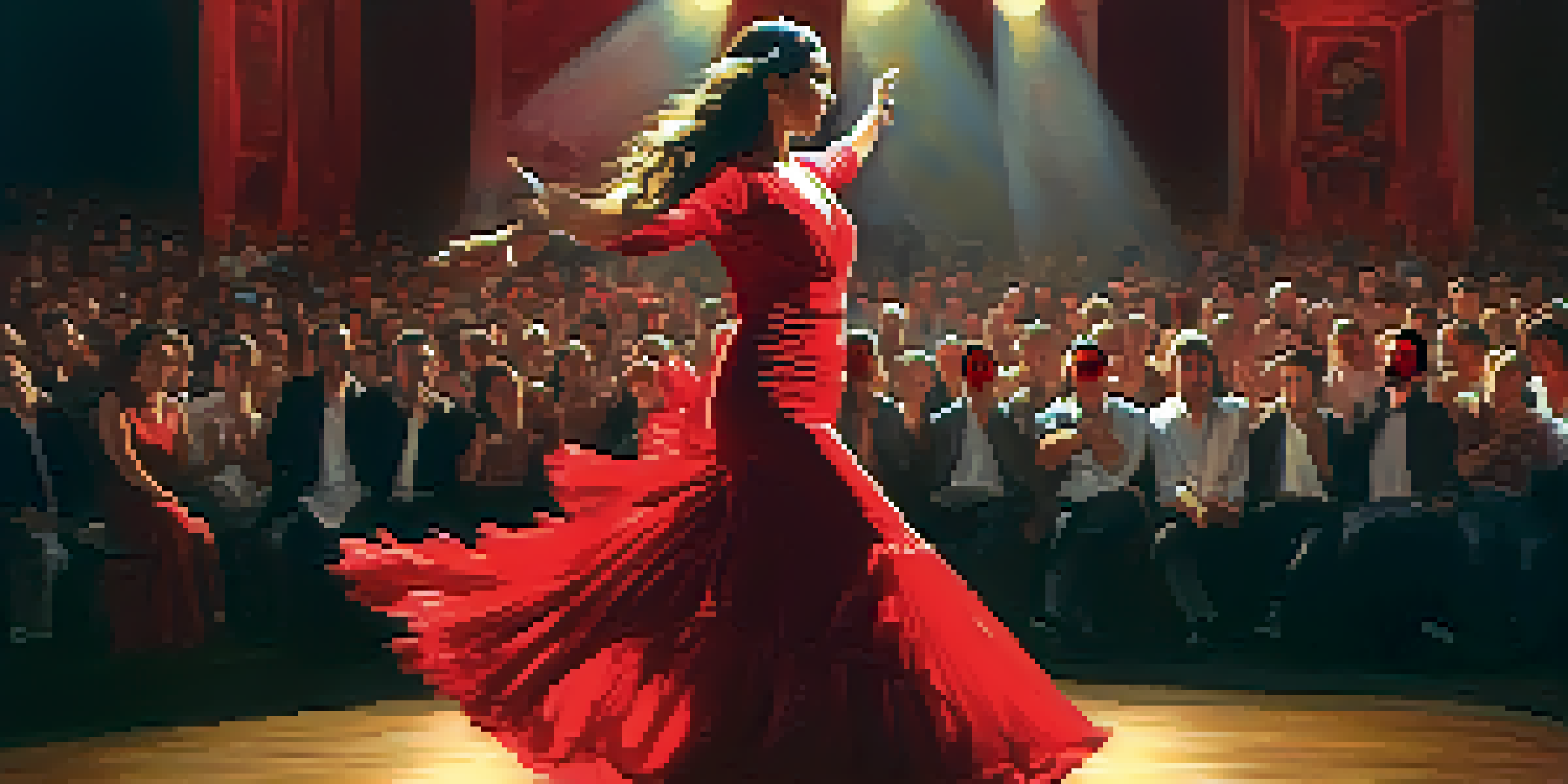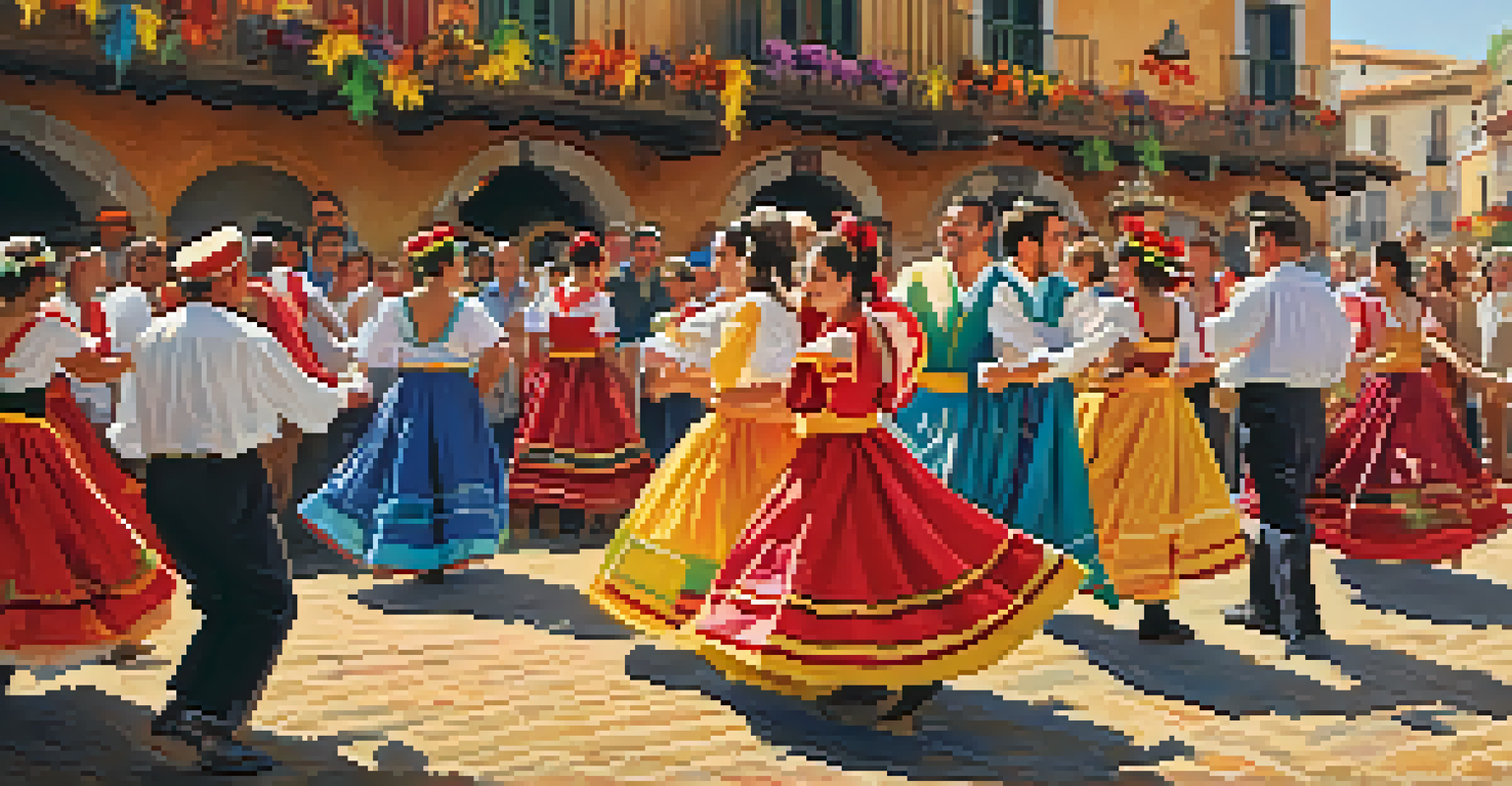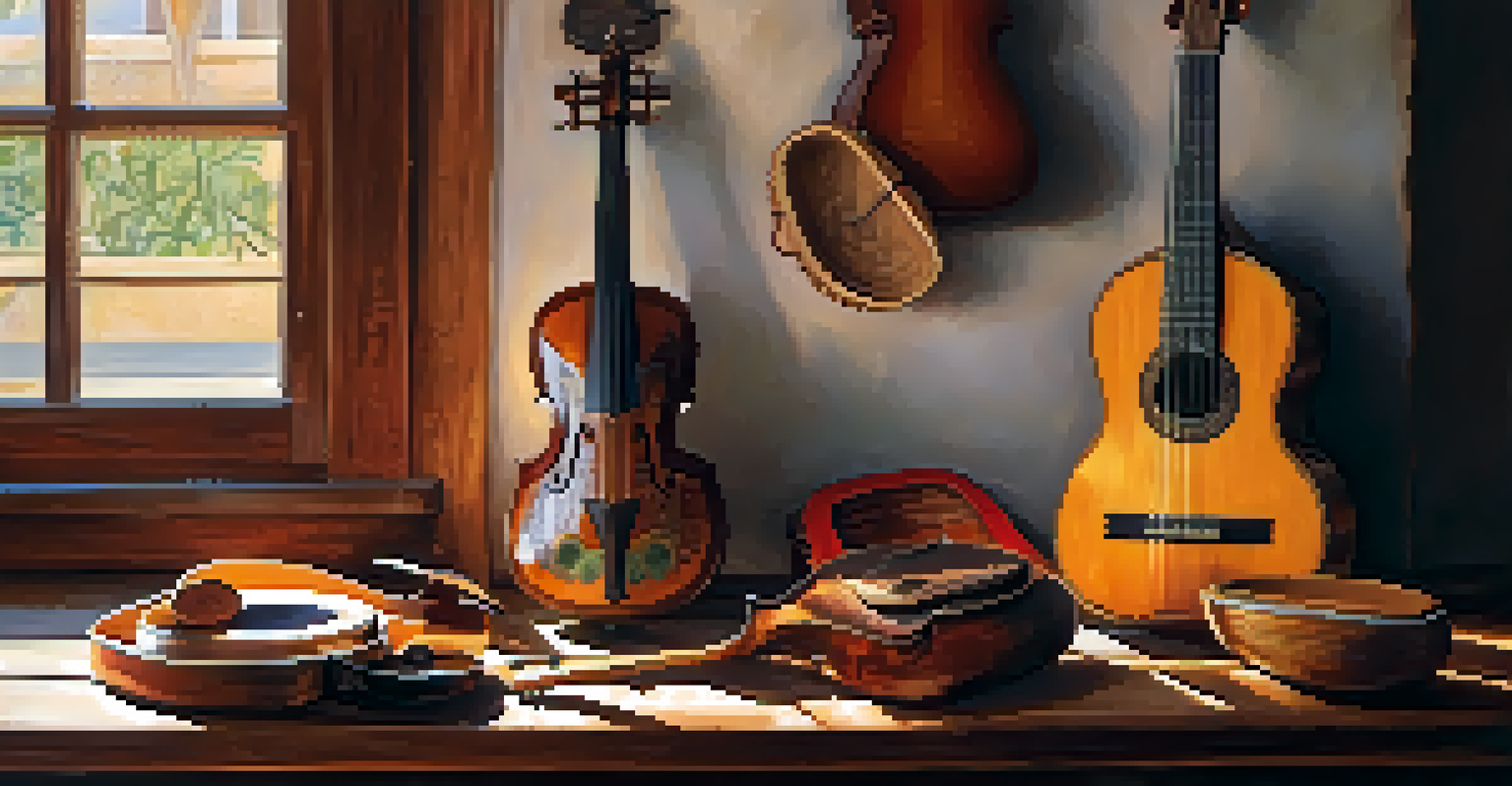Exploring the Rich Tapestry of Spanish Folk Music Traditions

An Introduction to Spanish Folk Music: A Cultural Overview
Spanish folk music is a vibrant expression of the country's rich cultural heritage. Each region boasts its unique style, influenced by historical events, geography, and local traditions. From the passionate flamenco of Andalusia to the lively jota of Aragon, the diversity is astounding.
Music is the shorthand of emotion.
This musical tapestry is woven with various instruments, rhythms, and melodies that tell stories of love, struggle, and celebration. Folk music in Spain is not just entertainment; it serves as a communal bond that connects generations. Whether through dance or song, it embodies the spirit of the people.
As we delve deeper into this topic, we will explore the origins, key styles, and notable musicians that have shaped Spanish folk music over the years. By understanding these elements, we can appreciate the profound impact of folk traditions on Spanish culture.
The Rich History Behind Spanish Folk Music Traditions
The roots of Spanish folk music can be traced back to ancient civilizations, including the Celts and Moors, who influenced the sounds and instruments. This historical backdrop is essential in understanding the evolution of musical styles across the regions. Each era brought new influences, contributing to the rich diversity we see today.

During the Middle Ages, music was often used in religious contexts, but as time progressed, secular themes emerged, reflecting daily life and emotions. This shift laid the groundwork for the various folk traditions we now recognize. As communities celebrated festivals and life events, music became an integral part of social gatherings.
Diverse Roots of Spanish Folk Music
Spanish folk music is a rich tapestry influenced by various historical cultures and regional traditions.
The blending of cultures, particularly in regions like Andalusia, gave birth to genres like flamenco, which incorporates Arabic, Jewish, and Gypsy influences. This historical intertwining of cultures illustrates how music serves as a reflection of society and its transformations over time.
Key Instruments That Define Spanish Folk Music
Instruments play a crucial role in defining the sound of Spanish folk music. The guitar, particularly the classical and flamenco varieties, is perhaps the most iconic, providing both rhythm and melody. The strumming of the guitar evokes deep emotions, making it a staple in many folk performances.
The best music is essentially there to provide you something to face the world with.
Other instruments, such as the castanets, accordion, and bagpipes, add unique textures and rhythms to the music. For instance, the dulzaina, a traditional woodwind instrument, is often featured in regional folk dances, enhancing the lively atmosphere. Each instrument contributes its voice to the collective sound, creating a rich auditory experience.
Moreover, the use of percussion instruments, like the cajón, emphasizes the rhythmic complexity found in Spanish folk music. These instruments not only provide a backbone to the music but also engage the audience, inviting them to clap, dance, and celebrate together.
Flamenco: The Heartbeat of Spanish Folk Music
Flamenco is perhaps the most renowned form of Spanish folk music, celebrated for its passionate expression and intricate rhythms. Originating from Andalusia, this genre encompasses singing, guitar playing, and dance, creating a powerful and emotive performance. The intensity of flamenco reflects the struggles and joys of life, resonating deeply with audiences both locally and globally.
One of the defining features of flamenco is the interplay between the singer (cantaores), guitarist (tocaores), and dancers (bailaores). This dynamic interaction enhances the performance, with each artist feeding off the other's energy. The improvisational nature of flamenco allows for spontaneous expression, making each performance unique.
Flamenco: A Cultural Icon
Flamenco stands out as the most celebrated form of Spanish folk music, showcasing passionate expression and intricate performances.
Flamenco has transcended borders, influencing various music genres worldwide. Artists like Paco de Lucía and Camarón de la Isla have brought flamenco to international stages, showcasing its beauty and depth. This global recognition has fostered a greater appreciation for Spanish folk music as a whole.
Regional Variations: The Diversity of Spanish Folk Music
Spain's diverse geography and cultural influences have resulted in a wide array of folk music styles. Each region has its own signature sound, reflecting local traditions and histories. For example, the jota from Aragon is characterized by its lively rhythm and lively footwork, while the muñeira from Galicia features a distinct bagpipe sound.
This regional diversity not only enriches the folk music landscape but also highlights the importance of community identity. Music is often tied to local festivals and celebrations, reinforcing cultural pride. As people gather to perform and dance, they create a sense of belonging and continuity.
Moreover, these regional styles often incorporate unique instruments, costumes, and dance forms, further distinguishing them from one another. The beauty of Spanish folk music lies in its ability to celebrate local customs while simultaneously fostering a sense of unity across the nation.
Folk Dances: Movements That Tell a Story
Dance is an integral part of Spanish folk music, bringing the music to life through movement. Each dance has its unique style, rhythm, and significance, often reflecting the themes of the accompanying music. For example, the flamenco dance is known for its expressive movements and intricate footwork, conveying deep emotions and narratives.
Traditional dances are often performed during festivals, weddings, and other celebrations, creating a joyful atmosphere that invites participation. Dancers wear vibrant costumes that represent their cultural heritage, adding a visual element that enhances the overall experience. This combination of music and dance fosters a sense of community and celebration.
Evolving Traditions in Modern Times
Spanish folk music continues to thrive as contemporary artists blend traditional sounds with modern influences, ensuring its relevance.
Moreover, folk dances often serve as a way to pass down traditions from one generation to the next. As children observe and participate in these dances, they learn about their cultural identity and the stories behind the movements. This intergenerational connection is vital for preserving the rich tapestry of Spanish folk music traditions.
The Future of Spanish Folk Music: A Living Tradition
Spanish folk music is not a relic of the past; it is a living tradition that continues to evolve. Contemporary artists are blending traditional sounds with modern influences, creating innovative fusions that appeal to younger audiences. This evolution ensures that folk music remains relevant in today's musical landscape.
Festivals celebrating folk music have gained popularity, drawing both local and international performers. These events provide a platform for artists to showcase their work while also encouraging collaboration between traditional and contemporary musicians. As a result, folk music can reach new audiences and inspire fresh interpretations.

However, as folk music evolves, it is crucial to maintain a connection to its roots. By honoring traditional practices while embracing change, Spanish folk music can thrive for generations to come. This adaptability is what makes it a vibrant and enduring part of Spain's cultural fabric.